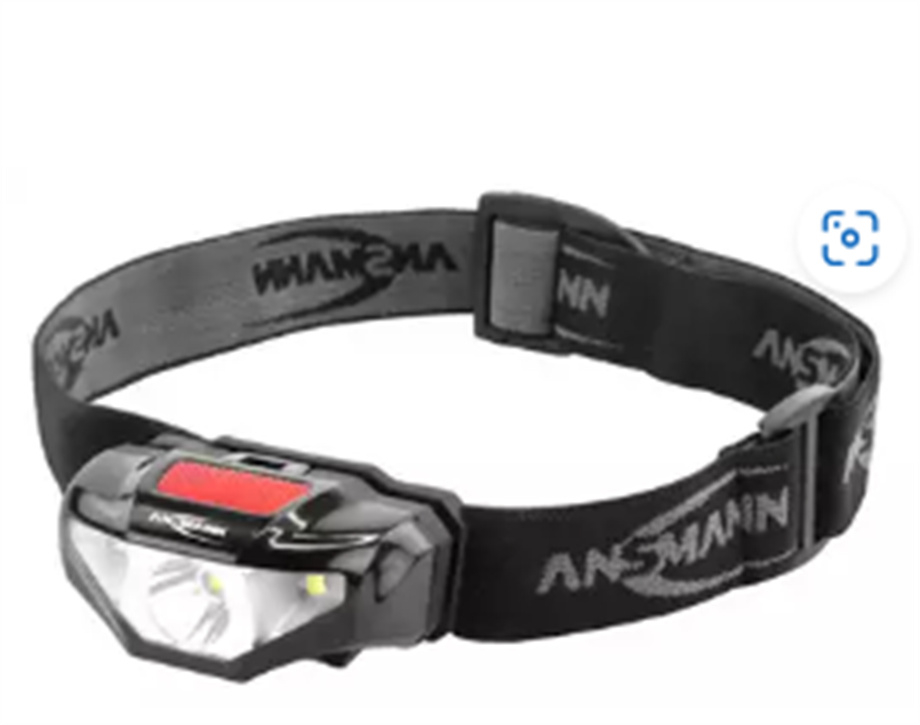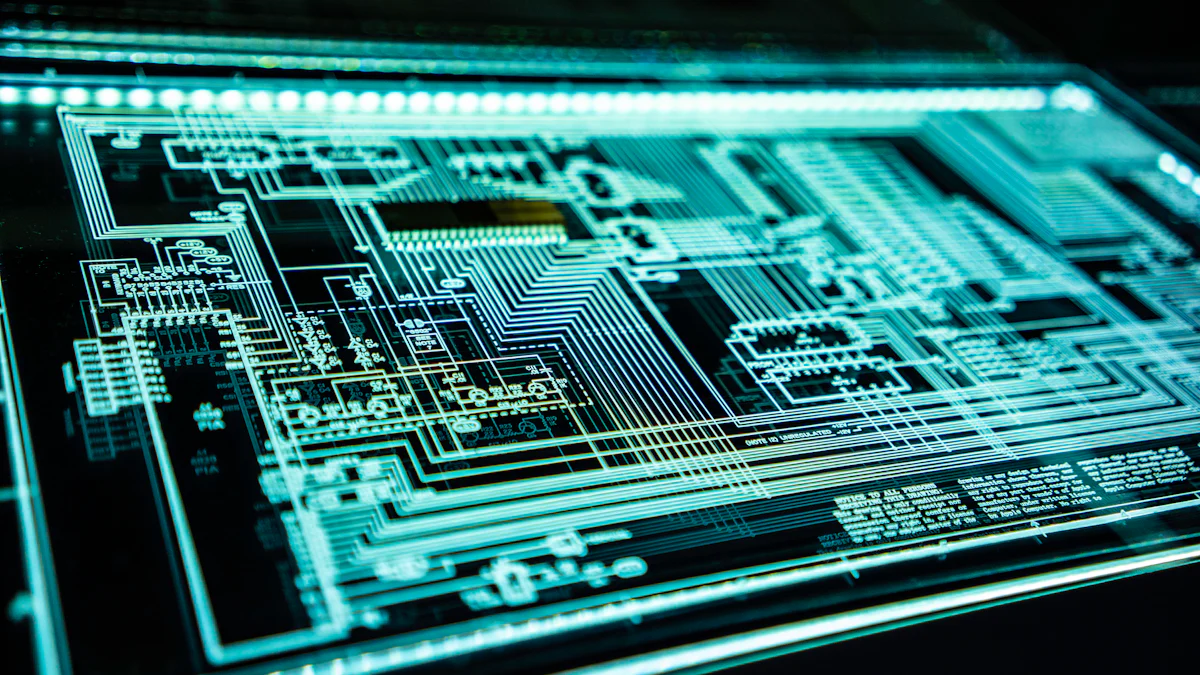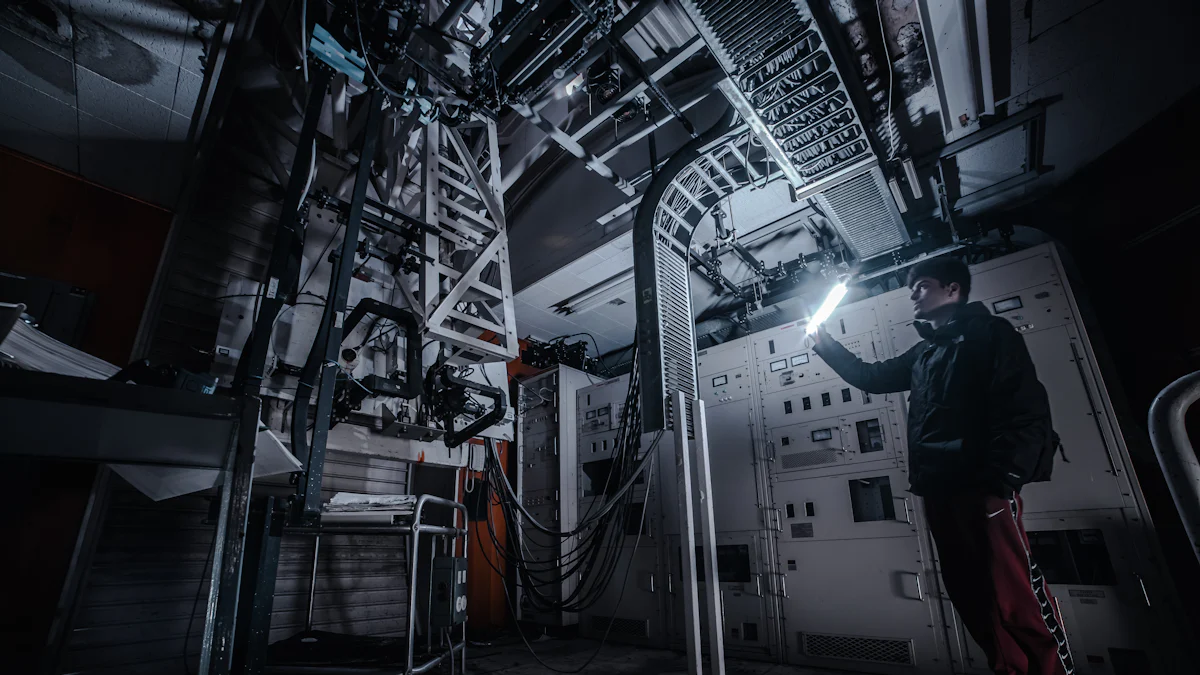How Emerging Technologies Are Shaping the Flashlight Supply Chain

How Emerging Technologies Are Shaping the Flashlight Supply Chain is evident in the remarkable advancements transforming the industry. With Type-C compatibility, you now experience faster and more convenient charging. Enhanced battery efficiency not only reduces energy consumption but also extends the lifespan of flashlights, minimizing the need for frequent recharges. Sustainability is further promoted through the use of recycled plastics and bio-based materials, significantly lowering environmental impact. Additionally, digital transformations in the supply chain ensure flashlights are manufactured and delivered with greater precision and efficiency. These emerging technologies are reshaping the flashlight supply chain, creating a more sustainable and user-friendly experience for you.
Key Takeaways
New technologies like AI and IoT make flashlight supply chains better.
AI predicts what people need and manages stock, cutting waste.
IoT sensors track shipments live, so flashlights arrive safely and on time.
Blockchain makes sure products are real and builds trust with buyers.
Using green materials and saving energy helps the planet and the flashlight industry.
Artificial Intelligence in Supply Chain: Transforming the Flashlight Industry

Optimizing Inventory Management
Predictive analytics for demand forecasting
Artificial intelligence in supply chain management enables you to predict demand with remarkable accuracy. By leveraging big data and analytics, AI identifies patterns in consumer behavior, seasonal trends, and market dynamics. This allows you to anticipate demand fluctuations and adjust your supply chain planning accordingly. For example, companies like Blue Yonder use machine learning and predictive analytics to optimize inventory levels, balancing investment with service goals. A coffee retail chain achieved a 15% reduction in stock levels by implementing AI-powered inventory optimization. These innovations ensure you can meet customer needs while minimizing excess inventory.
Reducing overstock and stockouts
AI-driven data analytics helps you maintain the perfect balance between supply and demand. By analyzing real-time data, AI reduces the risk of overstocking or running out of stock. DHL, for instance, uses computer vision systems to monitor inventory in real-time, enhancing visibility and operational efficiency. This approach ensures that your supply chain processes remain agile and responsive, reducing costs and improving customer satisfaction.
Enhancing Production Efficiency
AI-driven automation in manufacturing
AI-powered automation revolutionizes flashlight manufacturing by streamlining workflows and boosting productivity. Advanced technologies like robotic systems operate continuously, increasing production rates and reducing manual errors. AI also predicts equipment failures, enabling predictive maintenance that minimizes downtime. These improvements enhance operational efficiency and lower production costs, ensuring you receive high-quality products faster.
Quality control through machine learning
Machine learning enhances quality control by detecting defects with unparalleled precision. Automated visual inspections powered by AI achieve defect detection rates of up to 90%, far surpassing human capabilities. This ensures that every flashlight meets stringent quality standards. Real-time processing further improves efficiency, reducing waste and ensuring consistent product excellence.
Improving Decision-Making with Real-Time Data
AI-powered risk management strategies
AI equips you with tools to identify and mitigate risks in supply chain management. By analyzing big data and analytics, AI uncovers potential disruptions and provides actionable insights. Companies like Proximo Spirits use decision intelligence to improve forecasting accuracy by 30%, ensuring better preparedness for market changes. This proactive approach strengthens your supply chain resilience.
Advanced planning and logistics optimization
Real-time data enhances supply chain planning by providing up-to-the-minute insights. AI enables advanced logistics optimization, ensuring efficient transportation and delivery. Real-time updates on order backlogs allow you to make prompt adjustments, improving overall efficiency. This level of digitization ensures your supply chain technology remains competitive and adaptable.
Internet of Things (IoT) and Supply Chain Technology for Flashlights
Real-Time Tracking and Monitoring
IoT sensors for shipment tracking
IoT sensors revolutionize how you track flashlight shipments. These devices provide real-time visibility across every stage of the supply chain. You can monitor the exact location of goods, ensuring timely interventions to prevent delays or losses. For example, GPS-enabled IoT sensors allow you to track shipments with precision, reducing the risk of misplaced or stolen goods. This enhanced visibility improves overall supply chain efficiency and ensures that flashlights reach their destination on time.
Monitoring environmental conditions during transit
Maintaining optimal conditions during transit is critical for flashlight components, especially batteries. IoT sensors monitor environmental factors like temperature and humidity, ensuring that goods remain within safe thresholds. This reduces the risk of damage and enhances product quality. For instance, sensors can alert you to fluctuations in temperature, allowing you to take corrective action immediately. This proactive approach minimizes waste and ensures customer satisfaction.
IoT Application | Benefit |
|---|---|
Real-time Tracking | Facilitates tracking of goods and shipments, allowing timely interventions to avoid losses. |
Monitoring Storage Conditions | Helps maintain environmental thresholds, reducing spoilage of perishable goods. |
Streamlining Warehouse Operations
Smart shelves and inventory systems
Smart shelves equipped with RFID technology transform how you manage inventory. These systems track stock levels in real time and send alerts when items run low. This automation reduces manual labor and ensures that you always have the right products available. For example, smart shelves guide workers through the fulfillment process, minimizing errors and improving efficiency. In the flashlight industry, this means faster order processing and fewer stockouts.
Automated reordering processes
IoT-enabled inventory systems automate reordering, saving you time and reducing errors. These systems analyze historical sales data to predict future demand, ensuring that you maintain optimal stock levels. For instance, when inventory drops below a certain threshold, the system automatically places an order with suppliers. This seamless process prevents shortages and keeps your supply chain running smoothly.
Smart shelves utilize RFID technology to track inventory, allowing you to monitor stock levels and receive alerts for out-of-stock items.
Smart warehouses minimize errors by providing real-time data on inventory levels, guiding workers through the fulfillment process for accurate selections.
These systems leverage historical sales data to predict future demand, helping to minimize stockouts and improve customer satisfaction.
Enhancing Collaboration Across the Supply Chain
IoT-enabled communication between suppliers and manufacturers
IoT devices improve communication between suppliers and manufacturers, ensuring better coordination. For example, RFID tags and GPS trackers provide instant updates on inventory levels and shipment status. This real-time data allows you to address issues proactively, reducing delays and inefficiencies. By sharing accurate information, you can strengthen partnerships and streamline operations.
Data sharing for improved coordination
IoT technology breaks down data silos, enabling seamless collaboration across the supply chain. Sensors and connected devices share critical data, such as production progress and shipment conditions, in real time. This transparency helps you make informed decisions and respond quickly to changes. For instance, manufacturers can adjust production schedules based on real-time inventory data, ensuring that supply meets demand.
IoT devices, RFID, and GPS tracking provide instant updates on inventory levels, shipment status, and production progress.
IoT-enabled sensors monitor the condition and location of goods throughout the supply chain, enabling proactive issue detection.
Real-time tracking and reporting capabilities help manufacturers make informed maintenance decisions, enhancing efficiency.
Blockchain Technology: Enhancing Transparency in the Flashlight Supply Chain
Ensuring Product Authenticity
Tracking raw materials to finished products
Blockchain technology allows you to track flashlight components from raw materials to finished products with unmatched precision. This decentralized system creates a tamper-proof record of every transaction, ensuring complete traceability. For example, companies like Walmart and Unilever use blockchain to monitor their supply chains. Walmart tracks leafy greens from seed planting to store shelves, while Unilever traces palm oil to ensure sustainable sourcing. Similarly, in the flashlight industry, blockchain can provide visibility and traceability for materials like aluminum and lithium, ensuring ethical sourcing and compliance with regulations.
Preventing counterfeit flashlights
Counterfeit products harm both businesses and consumers. Blockchain helps you combat this issue by creating an immutable ledger that verifies the authenticity of each flashlight. By scanning a QR code or accessing blockchain records, you can confirm the origin and quality of the product. Companies like Pfizer use blockchain to prevent counterfeit pharmaceuticals, and this same approach can protect flashlight brands from fraudulent imitations.
Building Trust Through Transparency
Immutable records of transactions
Blockchain serves as a shared ledger that records transactions securely and transparently. This system ensures that all participants in the flashlight supply chain have access to the same data, fostering trust. IBM Food Trust demonstrates how blockchain enhances transparency by connecting stakeholders in the food supply chain. Similarly, in the flashlight industry, blockchain can provide visibility and traceability, ensuring that every step of the supply chain is transparent and reliable.
Strengthening consumer and partner confidence
When you know the origin and journey of a product, your confidence in its quality increases. Blockchain builds this trust by offering real-time access to supply chain data. For flashlight manufacturers, this means stronger relationships with suppliers and greater consumer loyalty. The ability to verify sourcing practices and production standards strengthens your confidence in the product and the brand.
Streamlining Payments and Contracts
Smart contracts for faster transactions
Smart contracts simplify and accelerate transactions in the flashlight supply chain. These self-executing contracts automatically enforce terms once conditions are met. For example, when a shipment of flashlight components arrives, payment is released instantly. This automation reduces delays and eliminates the need for intermediaries. The table below highlights the advantages of smart contracts:
Advantage | Description |
|---|---|
Automation | Accelerates processes and allows teams to focus on strategic initiatives. |
Immediate Execution | Executes automatically once conditions are met, enabling quick responses to market demands. |
Reduced Intermediaries | Eliminates the need for intermediaries, speeding up transactions and reducing associated costs. |
Real-time Updates | Provides current information to all parties, facilitating informed decision-making in dynamic environments. |
Increased Transparency | Enhances trust among parties by allowing visibility of the contract and its execution on the blockchain. |
Reducing fraud and errors in financial processes
Blockchain minimizes fraud and errors by recording every transaction on an immutable ledger. This ensures that payments and contracts are accurate and secure. By using blockchain, you can reduce disputes and streamline financial processes, saving time and resources. This technology provides the transparency needed to build trust among all supply chain participants.
Sustainability Initiatives: A Greener Flashlight Supply Chain

Reducing Environmental Impact
Adoption of eco-friendly materials
You can significantly reduce the ecological footprint of flashlight production by adopting eco-friendly materials. Using renewable and sustainable resources like recycled plastics, bio-based polymers, and bamboo-derived components creates greener lighting solutions. These materials not only conserve non-renewable resources but also enhance product durability, making flashlights more resistant to wear and tear. By choosing sustainable materials, you support environmental conservation while enjoying longer-lasting products.
Minimizing waste in production
Minimizing waste in production processes is another critical step toward sustainability. Companies like Subaru have achieved zero waste in their manufacturing plants, saving millions annually while reducing environmental harm. Similarly, Piñatex transforms pineapple leaf fibers, a byproduct of farming, into sustainable textiles. These innovations demonstrate how waste reduction can benefit both the environment and businesses. By adopting similar practices, flashlight manufacturers can contribute to green and circular supply chains.
Energy-Efficient Manufacturing Processes
Leveraging renewable energy sources
Switching to renewable energy sources like solar or wind power can make flashlight manufacturing more energy-efficient. This shift reduces reliance on fossil fuels, lowering greenhouse gas emissions. For example, factories powered by renewable energy can produce flashlights with a smaller carbon footprint. By embracing this approach, you help create a greener supply chain while supporting global sustainability goals.
Implementing energy-saving technologies
Energy-saving technologies further enhance manufacturing efficiency. LED lighting in factories, energy-efficient machinery, and smart energy management systems reduce power consumption. These technologies not only cut costs but also align with sustainability objectives. By implementing these measures, flashlight manufacturers can optimize production while minimizing environmental impact.
Promoting Circular Economy Practices
Recycling and reusing flashlight components
Recycling and reusing flashlight components play a vital role in building green and circular supply chains. Manufacturers can recover valuable materials like aluminum and lithium from used products, reducing the need for new raw materials. This practice conserves resources and minimizes waste, ensuring a more sustainable production cycle.
Designing for product longevity and repairability
Designing flashlights for longevity and repairability supports a circular economy. Products built to last encourage you to repair rather than replace them, extending their life cycle. Easy disassembly allows components to be recycled or reused, further reducing waste. By prioritizing these design principles, manufacturers create sustainable products that benefit both consumers and the planet.
Sustainability in the flashlight supply chain is not just a trend—it’s a necessity. By adopting eco-friendly materials, minimizing waste, leveraging renewable energy, and promoting circular economy practices, you contribute to a greener future.
Building Resilience with Emerging Technologies
Preparing for Supply Chain Disruptions
Scenario planning with AI simulations
AI plays a crucial role in preparing you for supply chain disruptions. By using machine learning techniques, you can predict market volatility with greater accuracy compared to traditional statistical methods. AI simulations allow you to model various scenarios, helping you identify potential risks and develop contingency plans. For example, predictive analytics can forecast demand changes, enabling you to adjust your supply chain strategies proactively. Leveraging technology for real-time insights enhances visibility, ensuring you stay ahead of potential challenges.
Diversifying supplier networks
Diversifying your supplier network strengthens your supply chain against disruptions. By sourcing materials from multiple suppliers, you reduce dependency on a single source. This approach improves risk management and ensures business continuity during unexpected events. A diverse supplier base also fosters stronger relationships and opens new opportunities for collaboration. Additionally, it boosts productivity by enabling accurate shipment estimations and timely order fulfillment. These strategies contribute to sustainable growth and enhanced customer satisfaction.
Enhancing Agility and Responsiveness
Real-time data for quick decision-making
Real-time data empowers you to respond swiftly to supply chain disruptions. Instant insights into operations allow you to resolve issues before they escalate. Procurement teams can adapt sourcing strategies immediately, ensuring minimal impact on your supply chain. Real-time updates also help suppliers manage inventory effectively, preventing delays. This agility is essential for navigating volatile markets and maintaining operational efficiency.
Flexible manufacturing systems
Flexible manufacturing systems enhance your ability to adapt to changing demands. Companies like Amazon and Toyota have demonstrated the value of agility by integrating advanced robotics and diversifying production locations. These systems allow you to shift production priorities quickly, ensuring uninterrupted operations during disruptions. By adopting flexible processes, you can maintain resilience and meet customer expectations even in challenging circumstances.
Strengthening Cybersecurity
Protecting supply chain data with blockchain
Blockchain technology safeguards your supply chain data by creating an immutable ledger. This ensures transparency and prevents unauthorized access. By integrating blockchain, you can track products and assets in real time, enabling early threat detection. This level of security builds trust among supply chain participants and protects sensitive information from cyberattacks.
Implementing robust cybersecurity protocols
Robust cybersecurity protocols are essential for protecting your supply chain from threats. Monitoring systems help you identify vulnerabilities and ensure compliance with security standards. Penetration testing uncovers potential risks, allowing you to address them proactively. Developing a response plan minimizes the impact of cybersecurity incidents, ensuring your operations remain secure. By prioritizing cybersecurity in supply chain management, you reduce risks and maintain resilience.
Emerging technologies like AI and blockchain are transforming how you prepare for disruptions, enhance agility, and strengthen cybersecurity. By adopting these innovations, you can build a resilient supply chain capable of withstanding challenges.
Emerging technologies are transforming the flashlight supply chain, creating a more efficient and sustainable industry. These advancements offer you several benefits:
Enhanced battery efficiency reduces energy use and extends flashlight lifespan.
Type-C charging compatibility simplifies charging with faster speeds and universal cables.
Sustainable materials like recycled plastics and bio-based polymers lower environmental impact.
Future trends, such as warehouse automation and autonomous vehicles, will further improve logistics and help meet emissions reduction goals. As these innovations evolve, they will empower you to access eco-friendly, high-quality flashlights while supporting a greener planet. The flashlight industry is set for a brighter, more sustainable future.
FAQ
What are the key benefits of using AI in the flashlight supply chain?
AI improves inventory management, enhances production efficiency, and optimizes logistics. It helps you predict demand, reduce waste, and ensure high-quality products. Real-time data also enables better decision-making, making your supply chain more agile and responsive.
How does IoT improve flashlight shipment tracking?
IoT sensors provide real-time updates on shipment location and environmental conditions. You can monitor temperature, humidity, and other factors to ensure product safety. This technology reduces delays, prevents damage, and ensures flashlights reach their destination on time.
Why is blockchain important for flashlight supply chain transparency?
Blockchain creates a tamper-proof record of transactions. It allows you to trace materials from sourcing to delivery. This ensures product authenticity, prevents counterfeiting, and builds trust among consumers and partners.
How can flashlight manufacturers adopt sustainable practices?
Manufacturers can use eco-friendly materials like recycled plastics and bio-based polymers. They can also minimize waste, leverage renewable energy, and design products for longevity and repairability. These practices reduce environmental impact and promote a circular economy.
What technologies help build resilience in the flashlight supply chain?
AI simulations prepare you for disruptions by modeling scenarios and predicting risks. Blockchain secures data, while IoT provides real-time insights. Flexible manufacturing systems and diversified supplier networks enhance your ability to adapt to challenges.
💡 Tip: Embracing these technologies ensures a more efficient, transparent, and sustainable flashlight supply chain.
See Also
Exploring Future Trends in Flashlight Demand Across Markets
Assessing Important Factors and Trends in Flashlight Suppliers
Comprehensive 2024 Overview of the Flashlight Industry in America
A Deep Dive into Flashlight Production and Quality in China
Understanding Manufacturing Processes and LED Innovations in Flashlights
